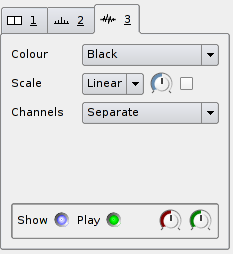

Regardless of the scanning approach used, a reliable landmark for orientation is the uterus (Fig. Considering these principles, the potential improvement in diagnostic accuracy in the assessment of functional, as well as pathologic, conditions in the gynecologic patient can be seen. This realization is necessary for the correct interpretation of blood flow velocity waveforms in the premenopausal patient. In general, during the periovulatory and luteal phases, there is an increasing diastolic velocity (reduced S/D ratio, pulsatility index, or resistance index).

When ordering and interpreting Doppler studies of the ovary and uterus, the practitioner should be cognizant of the effect of estrogen and progesterone on the blood flow velocity waveform. The interpretation of flow velocity waveforms requires a realization that blood flow velocity and volume of flow are not synonymous because of the effect of vasoconstriction.Īs is addressed later, the ability to visualize small arteries with color Doppler interrogation offers the potential for further evaluation of the physiologic and pathophysiologic conditions that may occur in the female genital tract. The velocity of blood flow is influenced by myocardial contractile force, vessel diameter, and downstream resistance. The resistance index divides the same numerator by the systolic velocity. The pulsatility index is calculated by dividing the difference between the systolic and diastolic velocities by the mean velocity (/mean velocity). To avoid this problem, other ratios also are used. As the diastolic velocity approaches zero, however, this relationship becomes less accurate. The S/D ratio (also referred to in some literature as the A/B ratio) is calculated by dividing the systolic maximum velocity by the diastolic minimum velocity. This can be described in terms of velocity (in centimeters per second) and by using descriptive ratios depicting the difference in the systolic velocity and diastolic velocity. By displaying the Doppler frequency shifts that result from calculating the difference between the emitted frequency and the frequency of echoes returning from a moving target, a flow velocity waveform is created. The direction, velocity, and variability of blood flow can be evaluated ultrasonographically by using the principle of the Doppler effect. For a more in-depth analysis of these imaging principles, the reader is referred to standard texts on ultrasonography. In addition to understanding the need for close approximation of the imaging target by the transducer, realize that the quality of the image is influenced by the frequency of the transducer, pulse repetition frequency, and image processing. Because much of the imaging is performed with the use of “organ-specific” planes, the practitioner must be aware of the scanning orientation to achieve an accurate interpretation of the findings noted on the image.

12, 13 Accurate orientation is a necessity for the appropriate interpretation of pelvic imaging. Whereas scanning planes for transabdominal scanning are classically described as sagittal, axial, and oblique, the transvaginal approach offers the additional coronal scanning plane. 11 A thorough understanding of the longitudinal (sagittal), cross-sectional (axial), and coronal anatomy of the pelvis is necessary for optimal image interpretation. Every effort must be made to avoid interference with transmission of ultrasonographic energy. In general, the closer the transducer tip is to the imaging target, the greater the resolution, and, therefore, the clearer the image. The quality of an image ultimately depends on the degree of resolution. For optimum ultrasonographic visualization, certain mechanical, physical, and ultrasonographic principles must be understood.


 0 kommentar(er)
0 kommentar(er)
